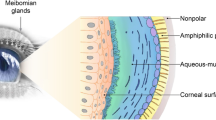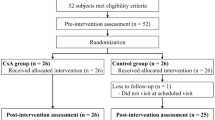Abstract
Meibomian gland (MG) dysfunction (MGD) is a multifactorial, chronic condition of the eyelids, leading to eye irritation, inflammation and ocular surface disease. Initial conservative therapy often includes a combination of warm compresses in addition to baby shampoo or eyelid wipes. The practice of lid hygiene dates back to the 1950s, when selenium sulfide-based shampoo was first used to treat seborrhoeic dermatitis of the eyelids. Today, tear-free baby shampoo has replaced dandruff shampoo for MGD treatment and offers symptom relief in selected patients. However, many will not achieve significant improvement on this therapy alone; some may even develop an allergy to the added dyes and fragrances in these products. Other manual and mechanical techniques to treat MGD include MG expression and massage, MG probing and LipiFlow®. While potentially effective in patients with moderate MGD, these procedures are more invasive and may be cost prohibitive. Pharmacological treatments are another course of action. Supplements rich in omega-3 fatty acids have been shown to improve both MGD and dry eye symptoms. Tea tree oil, specifically the terpenin-4-ol component, is especially effective in treating MGD associated with Demodex mites. Topical antibiotics, such as azithromycin, or systemic antibiotics, such as doxycycline or azithromycin, can improve MGD symptoms both by altering the ocular flora and through anti-inflammatory mechanisms. Addressing and treating concurrent ocular allergy is integral to symptom management. Topical N-acetylcysteine and topical cyclosporine can both be effective therapeutic adjuncts in patients with concurrent dry eye. A short course of topical steroid may be used in some severe cases, with monitoring for steroid-induced glaucoma and cataracts. While the standard method to treat MGD is simply warm compresses and baby shampoo, a more tailored approach to address the multiple aetiologies of the disease is suggested.
Similar content being viewed by others
References
Nelson JD, Shimazaki J, Benitez-del-Castillo JM, Craig JP, McCulley JP, Den S, et al. The International Workshop on Meibomian Gland Dysfunction: report of the Definition and Classification Subcommittee. Invest Ophthalmol Vis Sci. 2011;52(4):1930–7.
McCulley JP, Dougherty JM, Deneau DG. Classification of chronic blepharitis. Ophthalmology. 1982;89(10):1173–80.
Sullivan BD, Evans JE, Cermak JM, Krenzer KL, Dana MR, Sullivan DA. Complete androgen insensitivity syndrome: effect on human meibomian gland secretions. Arch Ophthalmol. 2002;120(12):1689–99.
Cohen LB. Use of Selsun in blepharitis marginalis. Am J Ophthalmol. 1954;38(4):560–2.
Wong AS, Fasanella RM, Haley LD, Marshall CL, Krehl WA. Selenium (Selsun) in the treatment of marginal blepharitis. AMA Arch Ophthalmol. 1956;55(2):246–53.
Geerling G, Tauber J, Baudouin C, Goto E, Matsumoto Y, O’Brien T, et al. The International Workshop on Meibomian Gland Dysfunction: report of the Subcommittee on Management and Treatment of Meibomian Gland Dysfunction. Invest Ophthalmol Vis Sci. 2001;52(4):2050–64.
Thomas K. The ‘no more tears’ shampoo, now with no formaldehyde. New York Times, Business Day. 17 Jan 2014.
Johnson & Johnson Consumer Companies, Inc. Johnson’s baby shampoo ingredients. 22 Jul 2014. http://www.johnsonsbaby.com/haircare/johnsons-baby-shampoo#ingredients. Accessed 9 Jun 2015.
Welling JD, Mauger TF, Schoenfield LR, Hendershot AJ. Chronic eyelid dermatitis secondary to cocamidopropyl betaine allergy in a patient using baby shampoo eyelid scrubs. JAMA Ophthalmol. 2014;132(3):357–9.
Zirwas M, Moennich J. Shampoos. Dermatitis. 2009;20(2):106–10.
Scheman A, Jacob S, Zirwas M, Warshaw E, Nedorost S, Katta R, et al. Contact allergy: alternatives for the 2007 North America Contact Dermatitis Group (NACDG) standard screening tray. Dis Mon. 2008;54(1–2):7–156.
Gerbach GF, Robinson MK, Felter SP, White IR, Basketter DA. Understanding fragrance allergy using an exposure-based risk assessment approach. Contact Dermat. 2001;45(6):333–40.
Korb DR, Greiner JV. Increase in tear film lipid layer thickness following treatment of meibomian glad dysfunction. Adv Exp Med Biol. 1994;350:293–8.
Olson MC, Korb DR, Greiner JV. Increase in tear film lipid layer thickness following treatment with warm compresses in patients with meibomian gland dysfunction. Eye Contact Lens. 2003;29(2):96–9.
Arita R, Morishige N, Shirakawa R, Sato Y, Amano S. Effects of eyelid warming devices on tear film parameters in normal subjects and patients with meibomian gland dysfunction. Ocul Surf. 2015. doi:10.1016/j.jtos.2015.04.005.
Maskin SL. Intraductal meibomian gland probing relieves symptoms of obstructive meibomian gland dysfunction. Cornea. 2010;29(10):1145–52.
TearScience®. LipiFlow® video gallery. 2015. http://www.lipiflow.com/video-gallery. Accessed 9 Jun 2015.
Lane SS, DuBiner HB, Epstein RJ, Ernest PH, Greiner JV, Hardten DR, et al. A new system, the LipiFlow, for the treatment of meibomian gland dysfunction. Cornea. 2010;31:396–404.
Greiner JV. Long-term (12-month) improvement in meibomian gland function and reduced dry eye symptoms with a single thermal pulsation treatment. Clin Exp Ophthalmol. 2013;41(6):524–30.
TearScience®. MiBo® clinical research website. 2015. http://mibomedicalgroup.com/clinical-research. Accessed 9 Jun 2015.
McCulley JP, Shine WE. The lipid layer of tears: dependent on meibomian gland function. Exp Eye Res. 2004;78(3):361–5.
Qiao J, Yan X. Emerging treatment options for meibomian gland dysfunction. Clin Ophthalmol. 2013;7:1797–803.
Aghai ZH, Kode A, Saslow JG, Nakhla T, Farhath S, Stahl GE, et al. Azithromycin suppresses activation of nuclear factor-kappa B and synthesis of pro-inflammatory cytokines in tracheal aspirate cells from premature infants. Pediatr Res. 2007;62(4):483–8.
Liu Y, Kam WR, Ding J, Sullivan DA. One man’s poison is another man’s meat: using azithromycin-induced phospholipidosis to promote ocular surface health. Toxicology. 2014;320:1–5.
Luchs J. Efficacy of topical azithromycin ophthalmic solution 1 % in the treatment of posterior blepharitis. Adv Ther. 2008;25(9):858–70.
Ta CN, Shine WE, McCulley JP, Pandya A, Trattler W, Norbury JW. Effects of minocycline on the ocular flora of patients with rosacea or seborrheic blepharitis. Cornea. 2003;22:545–8.
Aronowicz JD, Shine WE, Oral D, Vargas JM, McCulley JP. Short term oral minocycline treatment of meibomianitis. Br J Ophthalmol. 2006;90(7):856–60.
Hoeprich PD, Warshauer DM. Entry of four tetracyclines into saliva and tears. Antimicrob Agents Chemother. 1974;5(3):330–6.
Kashkouli MB, Fazel AJ, Kiavash V, Nojomi M, Ghiasian L. Oral azithromycin versus doxycycline in meibomian gland dysfunction: a randomized double-masked open-label clinical trial. Br J Ophthalmol. 2015;99(2):199–204.
Perry HD, Donnenfeld ED. New frontiers in dry eye treatment: for the first time, an eyedrop increases tear production by reducing inflammation. Ophthalmology Management. 2003. http://www.ophthalmologymanagement.com/articleviewer.aspx?articleID=85723. Accessed 3 Jun 2015.
Perry HD, Doshi-Carnevale S, Donnenfeld ED, Solomon R, Biser SA, Bloom AH. Efficacy of commercially available topical cyclosporine A 0.05 % in the treatment of meibomian gland dysfunction. Cornea. 2006;25(2):171–5.
Rubin M, Rao SN. Efficacy of topical cyclosporine 0.05 % in the treatment of posterior blepharitis. J Ocul Pharmacol Ther. 2006;22(1):47–53.
Akyol-Salman I, Azizi S, Mumcu U, Baykal O. Efficacy of topical N-acetylcysteine in the treatment of meibomian gland dysfunction. J Ocul Pharmacol Ther. 2010;26(4):329–33.
Akyol-Salman I, Azizi S, Mumcu UY, Ates O, Baykal O. Comparison of the efficacy of topical N-acetyl-cysteine and a topical antibiotic combination therapy in the treatment of meibomian gland dysfunction. J Ocul Pharmacol Ther. 2012;28(1):49–52.
Liu A, Ji J. Omega-3 essential fatty acids therapy for dry eye syndrome: a meta-analysis of randomized controlled studies. Med Sci Monit. 2014;20:1583–9.
Macsai MS. The role of omega-3 dietary supplementation in blepharitis and meibomian gland dysfunction (an AOS thesis). Trans Am Ophthalmol Soc. 2008;106:336–56.
Endres S, Ghorbani R, Kelley VE, et al. The effect of dietary supplementation with n-3 polyunsaturated fatty acids on the synthesis of interleukin-1 and tumor necrosis factor by mononuclear cells. N Engl J Med. 1989;320(5):265–71.
Calder PC. Polyunsaturated fatty acids, inflammation, and immunity. Lipids. 2001;36(9):1007–24.
Oleñik A, Mahillo-Fernández I, Alejandre-Alba N, Fernández-Sanz G, Pérez MA, Luxan S, et al. Benefits of omega-3 fatty acid dietary supplementation on health-related quality of life in patients with meibomian gland dysfunction. Clin Ophthalmol. 2014;8:831–6.
Patterson LE. New thinking on dry eye and MGD. Ophthalmology Management. 2014;18:2. http://www.ophthalmologymanagement.com/articleviewer.aspx?articleID=112052. Accessed 22 Jun 2015.
Lee H, Chung B, Kim KS, Seo KY, Choi BJ, Kim TI. Effects of topical loteprednol etabonate on tear cytokines and clinical outcomes in moderate and severe meibomian gland dysfunction: randomized clinical trial. Am J Ophthalmol. 2014;158(6):1172–83.
Torkildsen GL, Cockrum P, Meier E, Hammonds WM, Silverstein B, Silverstein S. Evaluation of clinical efficacy and safety of tobramycin/dexamethasone ophthalmic suspension 0.3 %/0.05 % compared to azithromycin ophthalmic solution 1 % in the treatment of moderate to severe acute blepharitis/blepharoconjunctivitis. Curr Med Res Opin. 2001;27(1):171–8.
Tighe S, Gao YY, Tseng S. Terpinen-3-ol is the most active ingredient of tea tree oil to kill Demodex mites. Transl Vis Sci Technol. 2013;2(7):1–8.
Bhandari V, Reddy JK. Blepharitis: always remember demodex. Middle East Afr J Ophthalmol. 2014;21(4):317–20.
Rubel DM, Freeman S, Southwell IA. Tea tree oil allergy: what is the offending agent? Report of three cases of tea tree oil allergy and review of the literature. Australas J Dermatol. 1998;39(4):244–7.
Crawford GH, Sciacca JR, James WD. Tea tree oil: cutaneous effects of the extracted oil of Melaleuca alternifolia. Dermatitis. 2004;15(2):59–66.
Arita R, Itoh K, Maeda S, Maeda K, Furuta A, Tomidokoro A, et al. Meibomian gland duct distortion in patients with perennial allergic conjunctivitis. Cornea. 2010;29(8):858–60.
Toda I, Shimazaki J, Tsubota K. Dry eye with only decreased tear break-up time is sometimes associated with allergic conjunctivitis. Ophthalmology. 1995;102:302–9.
Suzuki S, Goto E, Dogru M, Asano-Kato N, Matsumoto Y, Hara Y, et al. Tear film lipid layer alterations in allergic conjunctivitis. Cornea. 2006;25(3):277–80.
Arita R, Itoh K, Maeda S, Maeda K, Tomidokoro A, Amano S. Association of contact lens–related allergic conjunctivitis with changes in the morphology of meibomian glands. Jpn J Ophthalmol. 2012;56:14–9.
Mathers WD, Billborough M. Meibomian gland function and giant papillary conjunctivitis. Am J Ophthalmol. 1992;114(2):188–92.
Esmaeli B, Harvey JF, Hewlett B. Immunohistochemical evidence for estrogen receptors in meibomian glands. Ophthalmology. 2000;107(1):180–4.
Sullivan DA, Sullivan BD, Ullman MD, Rocha EM, Krenzer KL, Cermak JM, et al. Androgen influence on the meibomian gland. Invest Ophthalmol Vis Sci. 2000;41(2):3732–42.
ClinicalTrials.gov. Safety and efficacy of KPI-121 in subjects with inflammatory meibomian gland disease [ClinicalTrials.gov identifier: NCT02218489]. 2015. https://clinicaltrials.gov/ct2/show/NCT02218489. Accessed 22 Jun 2015.
ClinicalTrials.gov. A study of AGN-195263 for the treatment of meibomian gland dysfunction [ClinicalTrial.gov identifier: NCT01633788]. 2015. https://clinicaltrials.gov/ct2/show/NCT01633788. Accessed 22 Jun 2015.
Colligris B, Crooke A, Huete-Toral F, Pintor J. An update on dry eye disease molecular treatment: advances in drug pipelines. Expert Opin Pharmacother. 2014;15(10):1371–90.
Author information
Authors and Affiliations
Corresponding author
Ethics declarations
Conflict of interest
Both authors, Adam Thode and Robert Latkany, have no acknowledgments or conflicts of interest to disclose.
Funding
No sources of funding were used in the preparation of this review.
Rights and permissions
About this article
Cite this article
Thode, A.R., Latkany, R.A. Current and Emerging Therapeutic Strategies for the Treatment of Meibomian Gland Dysfunction (MGD). Drugs 75, 1177–1185 (2015). https://doi.org/10.1007/s40265-015-0432-8
Published:
Issue Date:
DOI: https://doi.org/10.1007/s40265-015-0432-8




